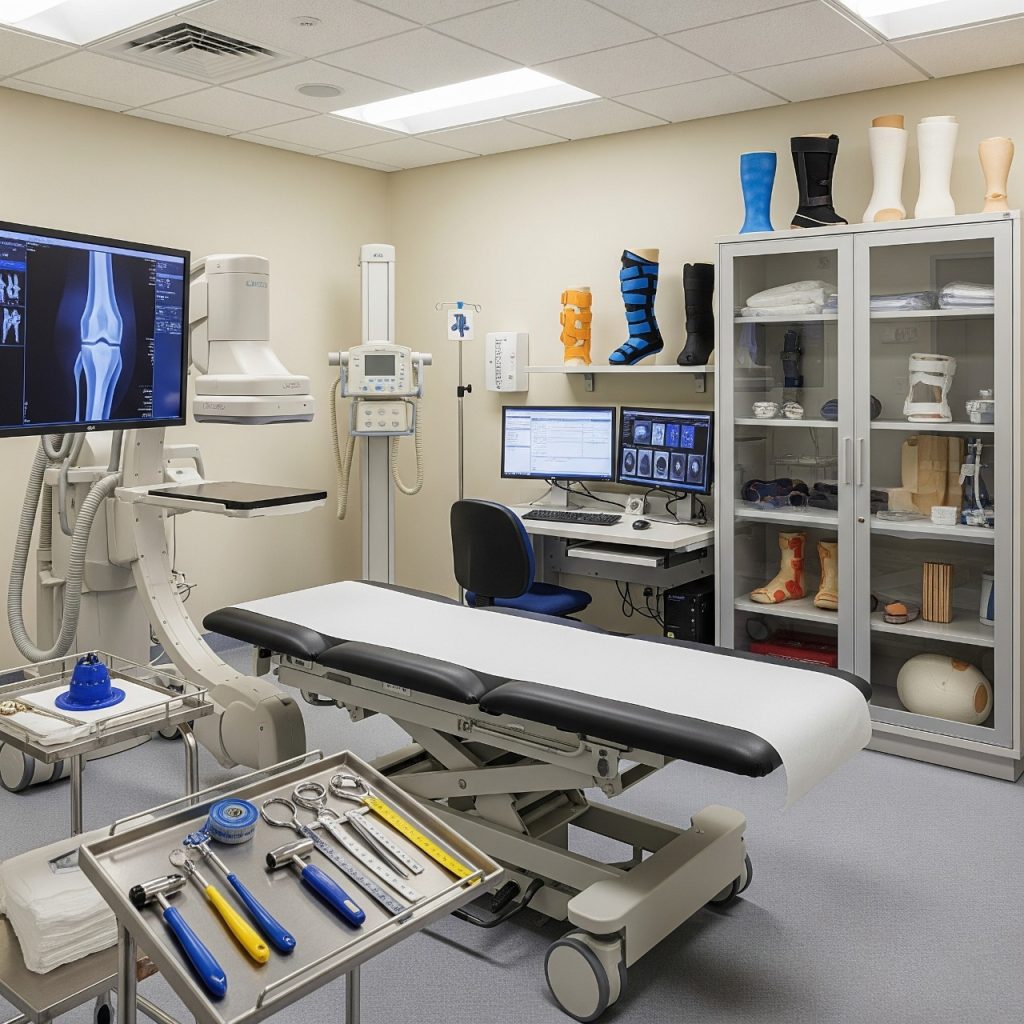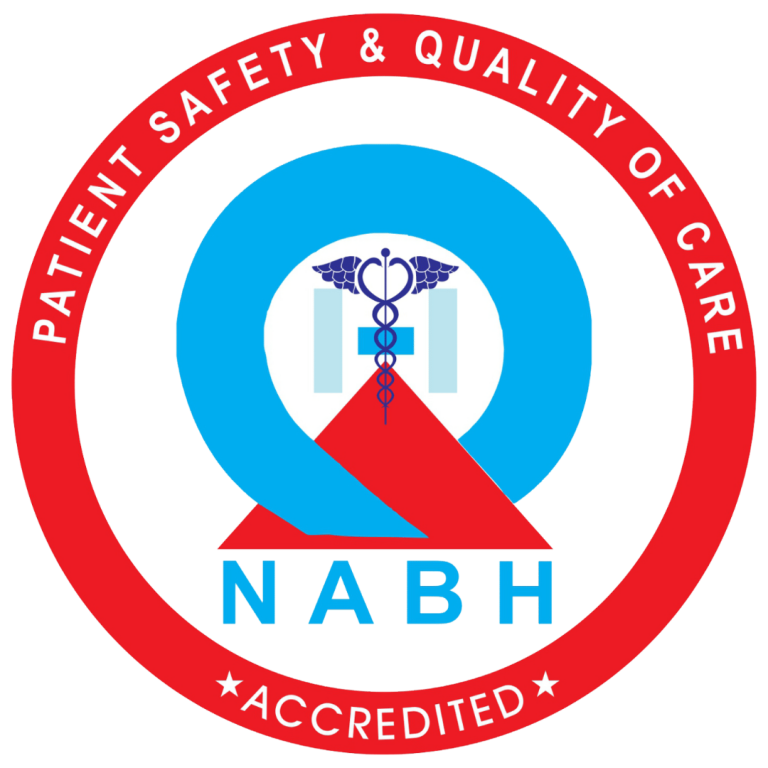Orthopedic
Expert Orthopedic Care
From sports injuries to joint replacement, our board-certified orthopedic surgeons provide comprehensive musculoskeletal care using the latest surgical techniques and rehabilitation protocols.

Orthopedics, also known as orthopaedics, is a specialized branch of medicine that deals with the diagnosis, treatment, prevention, and rehabilitation of conditions affecting the musculoskeletal system. This vital system includes bones, joints, ligaments, tendons, muscles, and nerves—essential components that enable movement, support, and stability in the human body.
Orthopedic care is crucial for patients suffering from injuries, chronic conditions, congenital disorders, or age-related wear and tear that affect mobility and quality of life.
Symptoms & Causes of Bone and Joint Problems (Orthopedics)
Recognising the symptoms early can help in timely diagnosis and effective treatment. Here are the most commonly reported signs of orthopedic issues:
1. Pain
- Localized pain in bones or joints (e.g., knee, hip, back)
- Persistent or chronic pain that worsens with movement
- Pain that flares up after activity or rest
2. Swelling and Inflammation
- Noticeable swelling around joints
- Warmth, redness, or tenderness to the touch
3. Stiffness
- Limited range of motion
- Joint stiffness, particularly in the morning or after rest
- Difficulty straightening or bending joints
4. Weakness or Instability
- Perceiving a joint might ”give out”
- Loss of strength in limbs
5. Deformities
- Bone misalignment (e.g., bowed legs, bunions)
- Evident alteration in joint or limb shape
6. Cracking or Popping Sounds
- Clicking or grinding sounds during movement (crepitus)
- May or may not be accompanied by pain
7. Numbness or Tingling
- Especially in spine-related issues like herniated discs
- May involve arms, hands, legs, or feet
8. Fatigue or Limited Endurance
- Muscle fatigue around injured joints
- Reduced ability to perform everyday tasks
9. Difficulty Walking or Standing
- Limping or trouble maintaining balance
- Trouble going up or down stairs
Types of Orthopaedic Diseases
Orthopaedic diseases are health conditions that involve the bones, joints, muscles, tendons, ligaments, and nerves — all the structures of the musculoskeletal system. These conditions can range from mild to severe and may result from injury, age-related wear and tear, genetic disorders, infections, or autoimmune diseases.
Here are the most common types of orthopedic diseases:
Arthritis: A group of conditions causing joint inflammation, pain, and stiffness
- Osteoarthritis: Resulting from wear and tear of cartilage, often involving knees, hips, and spine.
- Rheumatoid Arthritis: An autoimmune disease causing chronic joint inflammation.
- Psoriatic Arthritis: Affects people with psoriasis and leads to joint pain and swelling.
- Gout: A Type of arthritis resulting from the accumulation of uric acid crystals in joints.
Osteoporosis: A Condition in which bones become thin, fragile, and more susceptible to breaking, most often in the spine, hips, and wrists.
Bone Infections (Osteomyelitis): A serious condition where bones become infected, often due to bacteria. Symptoms include pain, fever, and swelling. Requires prompt diagnosis and treatment.
Bone Cancer and Tumors
- Benign Tumors: Non-cancerous but may require treatment if they affect bone structure or cause pain.
- Malignant Tumors: Such as osteosarcoma, can be life-threatening and require surgery, chemotherapy, or radiation.
Degenerative Disc Disease: Age-related condition where spinal discs deteriorate, causing back pain, stiffness, and sometimes nerve compression.
Scoliosis and Spine Deformities: Abnormal spurring of the spine that can develop during childhood or adolescence. Severe cases may require bracing or surgery.
Tendon and Ligament Disorders
- Tendinitis: Inflammation of tendons due to overuse.
- Bursitis: Inflammation of bursae, fluid-filled sacs that reduce friction in joints.
- Ligament Injuries: Such as ACL tears or sprains due to trauma or sports injuries.
Carpal Tunnel Syndrome: A nerve compression disorder affecting the wrist, causing pain, numbness, and tingling in the hand and fingers.
Developmental and Congenital Conditions
- Clubfoot: A birth defect where one or both feet are twisted out of shape or position.
- Developmental Dysplasia of the Hip (DDH): Involves the hip joint in children and infants.
Paget’s Disease of Bone: A long-term disease that makes bones larger and deformed by causing unusual bone remodeling.
Ankylosing Spondylitis: An inflammatory form of arthritis of the spine, resulting in chronic pain and stiffness.
Expert Diagnosis & Individualized Treatment: Our orthopedic team is experienced in diagnosing and managing a wide range of orthopedic diseases using advanced medical imaging, lab testing, and patient-centric treatment plans
Role of Orthopaedic Hospitals & Specialists: Orthopaedic hospitals and specialists play a critical role in the diagnosis, treatment, and management of musculoskeletal disorders. They provide both conservative (non-surgical) and surgical care, helping patients recover from injuries, manage chronic conditions, and maintain optimal mobility and quality of life.
Expert Diagnosis: Orthopaedic specialists are trained to accurately diagnose a wide range of musculoskeletal conditions. They use:
- Advanced imaging techniques (X-rays, MRIs, CT scans)
- Comprehensive physical examinations
- Patient history analysis: These diagnostic tools help identify the root cause of pain, injury, or mobility issues, whether it’s a simple sprain or a complex condition like arthritis or a bone tumor.
Personalized Treatment Plans: Orthopaedic specialists create tailored treatment plans based on each patient’s condition, needs, and lifestyle. They focus on:
- Pain management (medications, injections)
- Physical therapy (rehabilitation exercises, mobility training)
- Lifestyle modifications (diet, activity changes): The goal is to optimize recovery and prevent further injury or degeneration.
Conservative Treatments: Before resorting to surgery, orthopaedic specialists often employ non-surgical approaches, such as:
- Medications (anti-inflammatory drugs, pain relievers)
- Physical therapy to enhance muscle strength and flexibilityOrthotics and bracing to stabilize joints and prevent further damage
- Injections (steroid, hyaluronic acid) to reduce inflammation or pain
Surgical Interventions: When non-surgical treatments are not enough, orthopaedic professionals are trained to conduct a broad spectrum of operations, including:
- Joint replacement (hip, knee, shoulder)
- Spinal surgery (discectomy, spinal fusion)
- Repair of fractures with plates, screws, or rods
- Arthroscopic surgery (minimally invasive joint procedures): Orthopaedic surgeons use advanced techniques, ensuring quicker recovery times, less scarring, and better outcomes for patients.
Rehabilitation & Post-Surgical Care: After surgery or injury, rehabilitation is key to regaining strength and mobility. Orthopedic hospitals offer:
- Physiotherapy services to aid recovery
- Pain management strategies (e.g., nerve blocks, medication)
- Guided rehabilitation programs to help patients gradually return to their normal activities
- Follow-up care to ensure that healing progresses well and complications are avoided
Specialized Care in Subfields: Orthopaedic hospitals usually employ experts in a number of subspecialties, such as:
- Sports medicine: Treating athletic injuries such as ACL tears, rotator cuff injuries, and tendonitis
- Pediatric orthopedics: Managing musculoskeletal conditions in children, like scoliosis, hip dysplasia, and congenital disorders
- Spine surgery: Expertise in spinal disorders, ranging from herniated discs to spinal deformities
- Joint replacement: Performing knee, hip, and shoulder replacements for patients with degenerative joint diseases.
- Wrist and hand surgery: Correcting conditions such as carpal tunnel syndrome, arthritis, and tendon damage
Prevention & Education: Orthopaedic specialists also focus on preventive care to help patients avoid injuries and chronic conditions:
- Ergonomic advice for workplaces
- Sports injury prevention
- Bone health education, especially for aging populations at risk of osteoporosis
- Posture correction and movement strategies to avoid stress on the musculoskeletal system
Multidisciplinary Care: Orthopaedic specialists often work with other medical professionals, including:
- Physiatrists (rehabilitation doctors)
- Pain management specialists
- Rheumatologists (for inflammatory joint diseases)
- Neurologists (for nerve-related issues)
- Nutritionists (for bone and joint health)
Innovative Treatments & Research: Orthopaedic hospitals are also centers for advanced treatments and research in musculoskeletal health, offering:
- Stem cell therapy
- Platelet-rich plasma (PRP) injections
- Robotic-assisted surgeries for precision and quicker recovery
They stay at the forefront of new medical technologies to improve patient outcomes.
Causes of Bone and Joint Problems
Orthopedic conditions may result from various causes, including lifestyle, injuries, medical conditions, and genetics. Let’s break them down:
Trauma or Injury
- Accidents, falls, sports injuries
- Fractures, dislocations, ligament tears (e.g., ACL)
- Repetitive stress injuries (RSIs)
Aging and Degeneration
- Natural wear and tear of cartilage and joints
Osteoarthritis
- The most frequent degenerative joint disease
- Decreased bone density (osteopenia, osteoporosis)
Inflammatory Diseases
- Rheumatoid Arthritis (RA) – autoimmune disorder
- Gout – excess uric acid in joints
- Lupus and other systemic inflammatory conditions
Infections
- Septic arthritis – joint infection
- Osteomyelitis – bone infection
- May occur after surgery, injury, or due to systemic infection
Congenital or Developmental Issues
- Conditions present from birth
- Clubfoot, scoliosis, limb length discrepancies
- Developmental dysplasia of the hip (DDH)
Overuse or Repetitive Motion
- Occupation- or sport-related overuse injuries
- Tendonitis, carpal tunnel syndrome, bursitis
Nutritional Deficiencies
- Calcium and Vitamin D deficiency
- Contributes to brittle bones, rickets (children), osteomalacia (adults)
Metabolic or Endocrine Disorders
- Diabetes, thyroid disorders, parathyroid disease
- Can affect bone metabolism
Tumors
- Benign (e.g., osteochondroma) or malignant (e.g., osteosarcoma)
- Can cause bone pain, fractures, and deformities
Obesity
- Places excessive stress on weight-bearing joints (knees, hips, spine)
- Increases risk of early-onset arthritis and joint degeneration
Diagnostic Tests for Orthopedic Treatments
Proper diagnosis is the basis of successful orthopedic care. At our hospital, we utilize advanced diagnostic tools to evaluate bone, joint, and musculoskeletal conditions precisely. These tests help us determine the root cause of symptoms and create a personalized treatment plan.
X-Ray (Radiography): X-rays are the most frequent and necessary imaging examinations in orthopedics. They give distinct pictures of bones and joints, aiding in the detection of:
- Fractures and dislocations
- Bone deformities
- Osteoarthritis and joint degeneration
- Bone tumors or infections
MRI (Magnetic Resonance Imaging): MRI scans employ magnetic fields and radio waves to create detailed pictures of soft tissues like:
- Ligaments and tendons
- Cartilage damage (meniscus tear, labrum injuries)
- Spinal disc herniation
- Muscular injuries
CT Scan (Computed Tomography): A CT scan gives detailed cross-sectional pictures of bones and joints. It is especially useful for:
- Complex fractures
- Bone tumors
- Pre-surgical planning
- 3D bone imaging
Bone Densitometry (DEXA Scan): DEXA (Dual-Energy X-ray Absorptiometry) is used to measure bone mineral density. It helps in:
- Diagnosing osteoporosis
- Assessing fracture risk
- Monitoring bone health over time
Ultrasound Imaging: Orthopedic ultrasound helps visualize soft tissues in real time. It is useful for:
- Tendon and ligament injuries
- Muscle tears
- Joint inflammation and fluid accumulation
- Guided injections
Arthroscopy (Diagnostic): In some cases, a minimally invasive arthroscopic procedure may be used for diagnosis. It entails putting a tiny camera inside the joint to visually examine:
- Cartilage surfaces
- Joint lining and ligaments
- Unexplained joint pain
Electromyography (EMG) & Nerve Conduction Studies: These tests evaluate the electrical activity of muscles and nerves.They are used to diagnose:
- Nerve compression (e.g., carpal tunnel syndrome)
- Muscle weakness or dysfunction
- Neuromuscular disorders
Blood Tests: Though not imaging-based, blood tests help detect:
- Inflammatory conditions (e.g., rheumatoid arthritis)
- Infections (osteomyelitis, septic arthritis)
- Autoimmune disorders affecting joints
Procedures for Orthopaedic Treatment
Orthopedic treatments involve a wide range of procedures aimed at restoring function, relieving pain, and improving mobility in patients with musculoskeletal issues. Depending on the diagnosis, treatments may be non-surgical (conservative) or surgical in nature.
1. Non-Surgical Orthopedic Procedures:
Orthopedic care often begins with conservative approaches. These include:
Physical Therapy & Rehabilitation
- Customised exercise programs
- Post-surgery recovery support
- Injury prevention and strength training
Medications
- Pain relievers (NSAIDs)
- Muscle relaxants
- Disease-modifying antirheumatic drugs (DMARDs) for arthritis
Corticosteroid Injections
- Targeted injections to reduce inflammation and pain in joints or soft tissues
Hyaluronic Acid Injections
- Lubricates joints, especially useful for osteoarthritis of the knee
Orthotic Devices
- Braces, splints, and supports to immobilize or support injured areas
Platelet-Rich Plasma (PRP) Therapy
- Regenerative injection therapy using the patient’s own blood components to promote healing
2. Surgical Orthopedic Procedures:
When non-surgical methods fail, surgical intervention may be required. Common orthopedic surgeries include:
Joint Replacement Surgery (Arthroplasty)
- Total Knee Replacement
- Hip Replacement
- Shoulder Replacement: Used in advanced arthritis cases to restore joint function and relieve pain.
Arthroscopic Surgery
- Minimally invasive surgery with a small camera and tools
- Used for repairing torn ligaments (ACL), meniscus tears, and shoulder impingement
Fracture Fixation
- Internal fixation using plates, screws, rods, or pins to stabilize broken bones
Spine Surgery
- Discectomy: Removal of herniated disc material
- Spinal Fusion: Joining two or more vertebrae
- Laminectomy: Removal of spinal bone to relieve nerve pressure
Ligament & Tendon Repair
- ACL reconstruction
- Rotator cuff repair
- Tendon transfer procedures
Corrective Osteotomy
- Surgical cutting and realignment of bones to correct deformities
Amputation & Prosthetics
- For severe trauma or infection where limb salvage isn’t possible
- Fitted with advanced prosthetics for mobility
3. Post-Surgical Rehabilitation:
Every orthopedic procedure is followed by a tailored rehabilitation plan that includes:
Physiotherapy
Pain management
Mobility training
Lifestyle adjustments to aid recovery

Dr. Romil Rathi
Orthopedic & Joint Replacement Surgeon

Dr. Amit Nemade
Orthopedic & Joint Replacement Surgeon
Frequently Asked Questions
When should I see an orthopedic specialist?
You should consider seeing an orthopedic specialist if you experience persistent joint pain, limited range of motion, recurring injuries, or if your primary care doctor recommends it. We also treat acute injuries like fractures, dislocations, and severe sprains
What should I bring to my first orthopedic appointment?
Please bring your insurance cards, a list of current medications, any previous X-rays or MRI scans, and a detailed history of your symptoms including when they started and what makes them better or worse. Wear comfortable clothing that allows easy access to the affected area.
Do you offer same-day appointments for injuries?
What types of joint replacement surgeries do you perform?
We perform total and partial joint replacements for hips, knees, shoulders, and ankles. We use the latest techniques including minimally invasive approaches, computer-assisted surgery, and rapid recovery protocols to optimize outcomes and reduce recovery time
Book an Appointment



